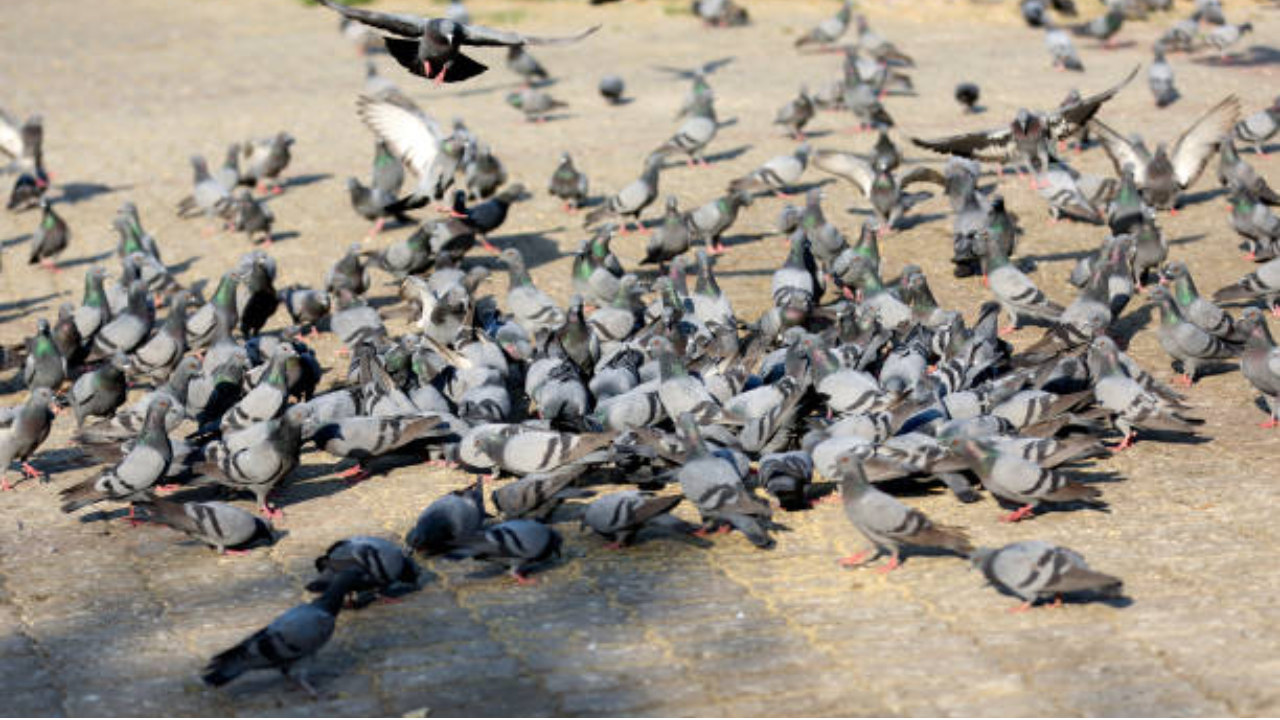But, there is another side too!
A new case study has highlighted the health risks of being exposed to droppings and feathers of pigeons.Those droppings on balconies, terrace, which we don’t assume to be hazardous, are actually potential allergens, the study has revealed.The case study talks about a 11 year old boy from east Delhi who developed potentially fatal allergic reactions after a prolonged contact with pigeon feathers and droppings. The boy was treated at Sir Ganga Ram Hospital.
Hypersensitivity Pneumonitis (HP)
The boy was brought to hospital due to a cough. His condition, however, worsened as his respiratory functions declined, they said in a statement.
The child was diagnosed with Hypersensitivity Pneumonitis (HP), which was triggered by an allergic reaction to pigeon proteins, and required immediate medical attention, Dr Dhiren Gupta, Co-Director of the Pediatric Intensive Care Unit (PICU), said. Medical tests showed lung inflammation and opacities consistent with HP, he said. Opacities refer to areas appearing white on a chest radiograph, when they should be darker.
HP is a chronic interstitial lung disease, in which the organ gets scarred, making it difficult to breathe. The condition is more common among adults and rare in children, affecting 2-4 per one lakh population in a year.
High-flow oxygen therapy
The boy was administered steroids and provided breathing support via high-flow oxygen therapy, in which the gas is passed in the body through a tube placed in the nostrils. This helped bring down inflammation in his lungs and restore breathing to near-normal levels, the doctor said in the case study.
Why is it concerning?
HP results from inflammation, brought about by the immune system in response to repeated exposure to certain environmental substances, such as bird allergens, moulds and fungi. Second-hand exposure to e-cigarettes too could result in an inflammatory response, Gupta told PTI.
HP commonly occurs in agricultural workers exposed to moldy hay, grain dust, or bird droppings (e.g., from pigeons or parakeets). The presence of specific antigens in these organic materials stimulates an immune response in the lungs. Mold spores found in indoor environments, such as in humidifiers, air conditioners, or damp buildings, can also trigger HP in susceptible individuals. Certain types of mold, such as Aspergillus, are known to cause hypersensitivity reactions. Exposure to certain chemicals used in industry, such as isocyanates, can provoke HP. These chemicals can be found in paints, varnishes, and insulation materials, among others. Some occupations involving exposure to animal proteins, such as in farming or poultry handling, can lead to HP. This includes exposure to antigens from feathers, dander, or dried animal proteins.
Eliminate pigeon droppings and feathers from vicinity
Ensure that buildings and structures are well-maintained to prevent pigeons from roosting or nesting. Use bird spikes, nets, or barriers to deter pigeons from landing or nesting in areas where people live or work.
How pigeons are hurting our health?
Regularly clean and remove pigeon droppings from surfaces, roofs, and gutters using appropriate protective equipment such as gloves and masks. Dispose of droppings safely according to local regulations.
Install screens on windows and vents to prevent pigeons from entering buildings. Use high-efficiency particulate air (HEPA) filters in ventilation systems to capture allergens from feathers and droppings.
Source link
Modified by Maaaty at Cheap Generic Pharmacy


